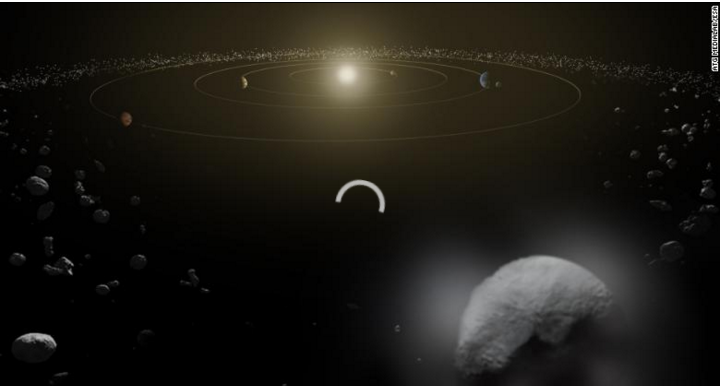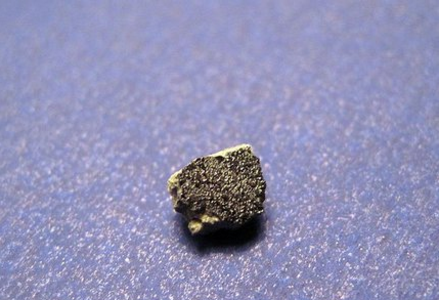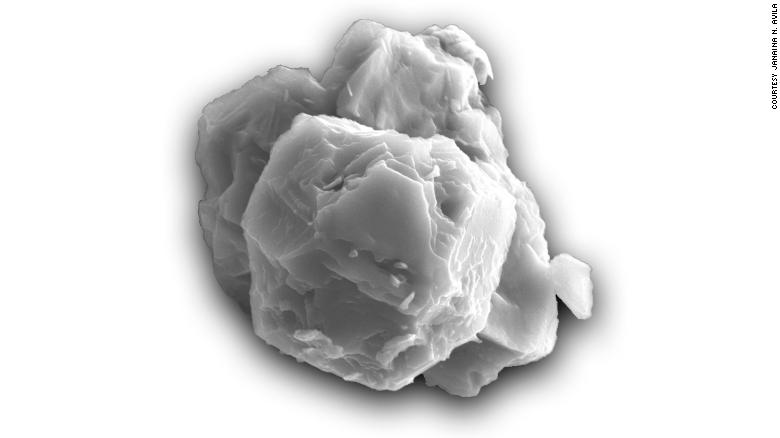Oldest material on Earth
The oldest material on Earth has been found in a meteorite
By Ashley Strickland From CNN

Fifty years ago, a meteorite fell to Earth and landed in Australia, carrying with it a rare sample from interstellar space. A new analysis of the meteorite revealed stardust that formed between five to seven billion years ago. That makes the meteorite and its stardust the oldest solid material ever discovered on Earth.
Our sun is around 4.6 billion years old, meaning this stardust existed long before our sun or solar system were even a reality. The stardust found on the meteorite are called presolar grains because they formed before our sun.

Stars are born when gas, dust and heat combine in just the right way. They can exist for millions or even billions of years before dying and expelling their key ingredients into space. This in turn helps new stars to be born, creating a space daisy chain.
Meteorites, if they don’t knock into too many things, can act like time capsules of the materials trapped within them, like stardust. That’s why the discovery of the presolar grains is such a rarity — only 5% of meteorites found on Earth contain them. Their impossibly tiny size is difficult to fathom.
One hundred of the largest found presolar grains could fit on a period, according to a release by the Field Museum in Chicago.
A new study of presolar grains from the Murchison meteorite recovered in Australia published Monday in the Proceedings of the National Academy of Sciences journal.
“This is one of the most exciting studies I’ve worked on,” said Philipp Heck, lead study author and a curator at the Field Museum. “These are the oldest solid materials ever found, and they tell us about how stars formed in our galaxy. They’re solid samples of stars.”

The meteorite was recovered in 1969 and presolar grains were isolated from it.
“It starts with crushing fragments of the meteorite down into a powder,” said Jennika Greer, study co-author and a graduate student at the Field Museum and the University of Chicago. “Once all the pieces are segregated, it’s a kind of paste, and it has a pungent characteristic. It smells like rotten peanut butter.”
Dissolving the paste in acid reveals the presolar grains, allowing the researchers to determine their age and the type of star they once belonged to.
The researchers were able to measure the exposure of the grains to cosmic rays, highly energized particles zipping through our galaxy.
“Some of these cosmic rays interact with the matter and form new elements,” Heck said. “And the longer they get exposed, the more those elements form. I compare this with putting out a bucket in a rainstorm. Assuming the rainfall is constant, the amount of water that accumulates in the bucket tells you how long it was exposed.”
Many of the grains recovered were between 4.6 and 4.9 billion years old, while others were older than 5.5 billion years.
They also learned that seven billion years ago, more stars began forming.
“We have more young grains than we expected,” Heck said. “Our hypothesis is that the majority of those grains, which are 4.9 to 4.6 billion years old, formed in an episode of enhanced star formation. There was a time before the start of the solar system when more stars formed than normal.”
Astronomers have argued about the rate of star formation. Some believe it’s steady and unchanging, while others believe there are peaks and dips.
“Some people think that the star formation rate of the galaxy is constant,” Heck said. “But thanks to these grains, we now have direct evidence for a period of enhanced star formation in our galaxy seven billion years ago with samples from meteorites. This is one of the key findings of our study.”
They also determined that the presolar grains have a habit of clumping together in granola-like clusters, which they didn’t think possible, Heck said.
Understanding the grains has shed light not only on stars and how long their stardust can last but also more on galaxies and their timelines.
“With this study, we have directly determined the lifetimes of stardust. We hope this will be picked up and studied so that people can use this as input for models of the whole galactic life cycle,” Heck said. “It’s so exciting to look at the history of our galaxy. Stardust is the oldest material to reach Earth, and from it, we can learn about our parent stars, the origin of the carbon in our bodies [and] the origin of the oxygen we breathe. With stardust, we can trace that material back to the time before the sun.”
For more on this story go to; https://edition.cnn.com/2020/01/13/world/oldest-material-earth-meteorite-scn/index.html





